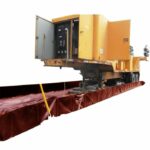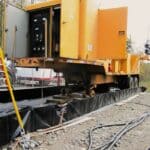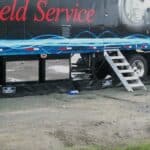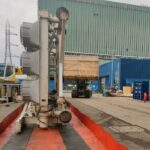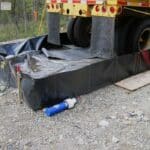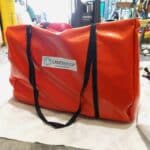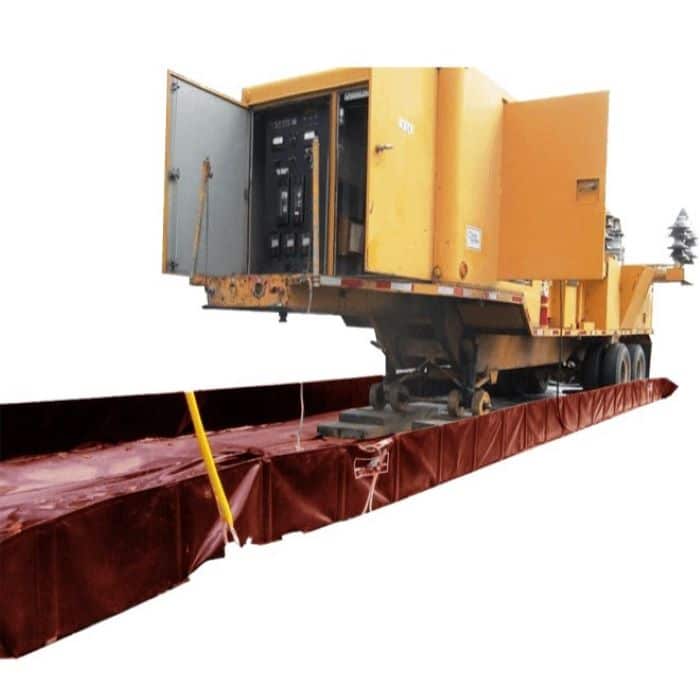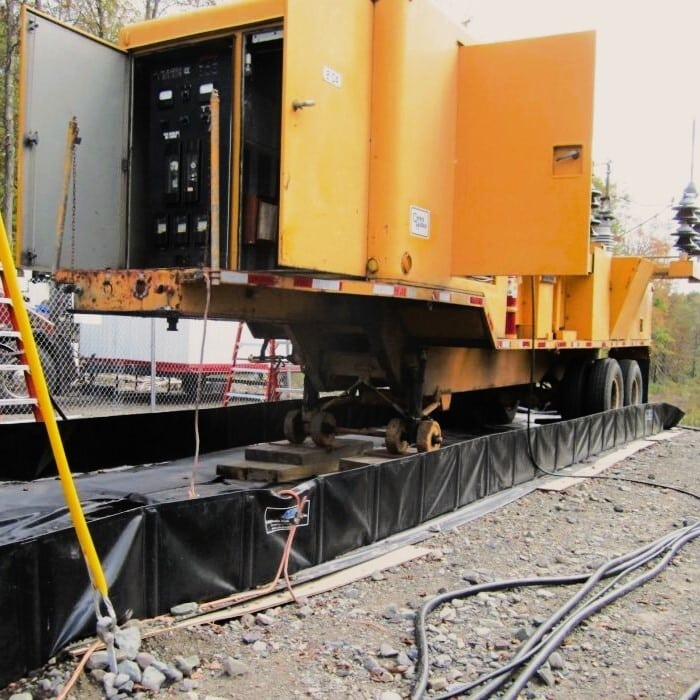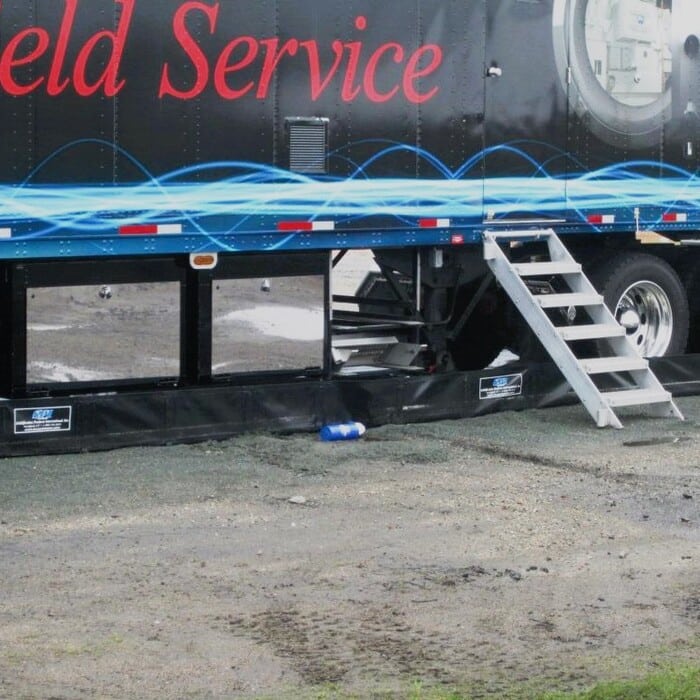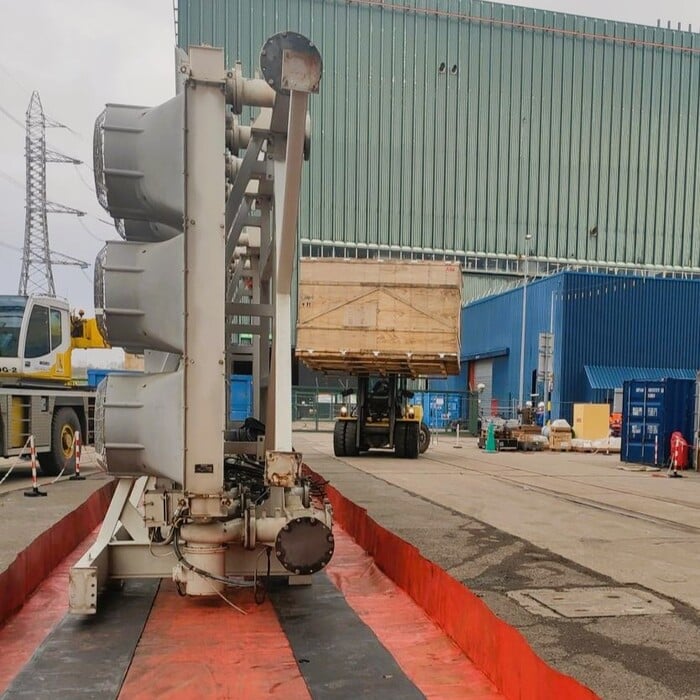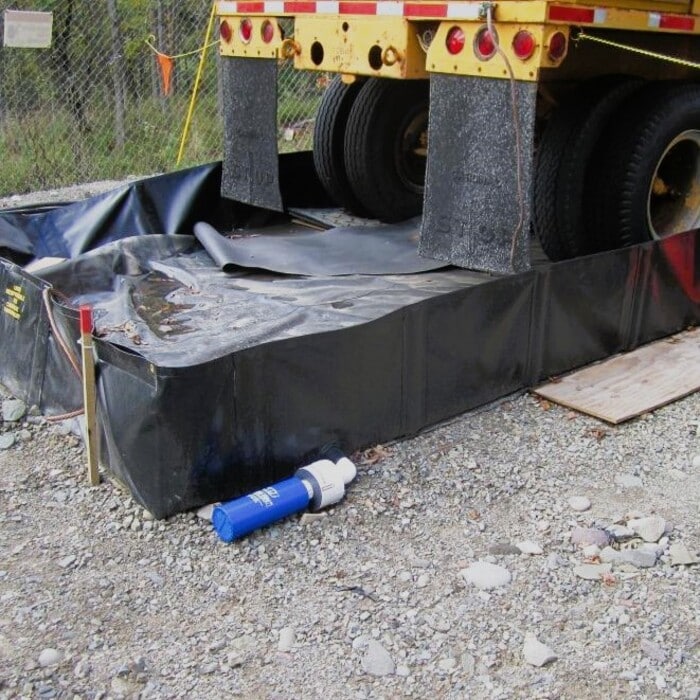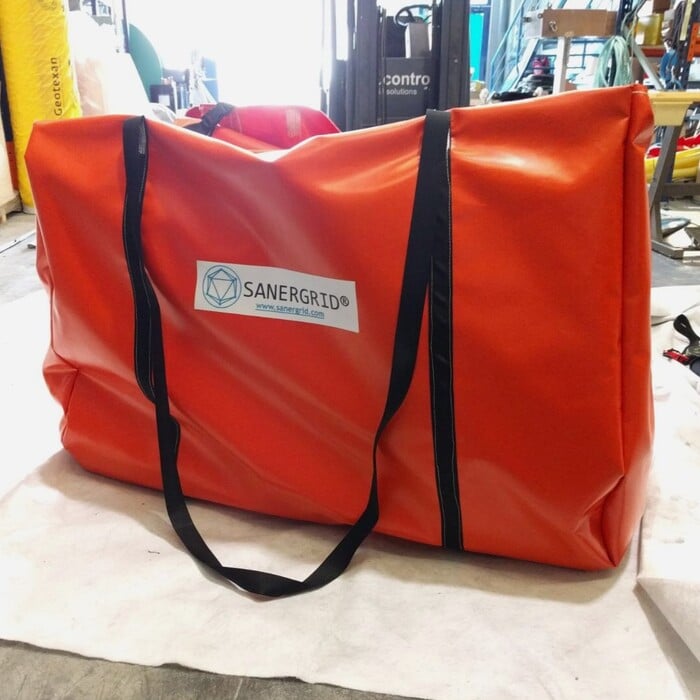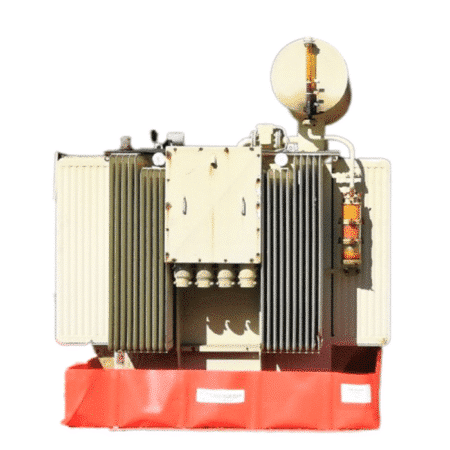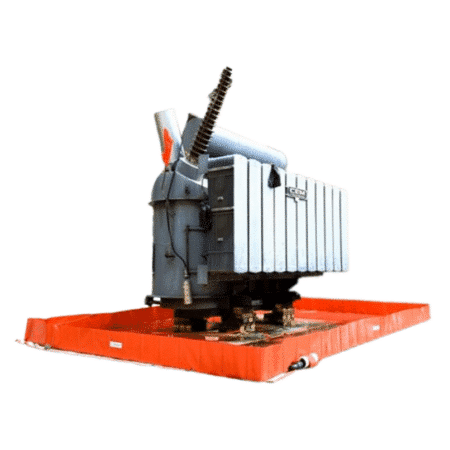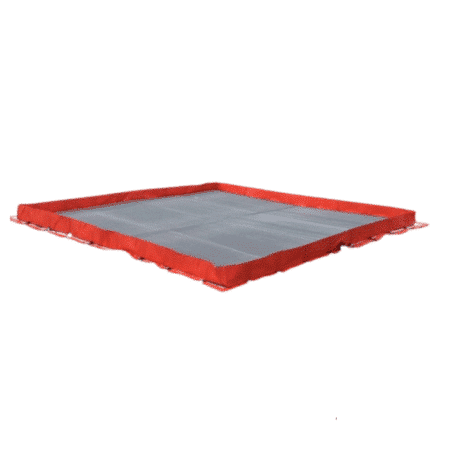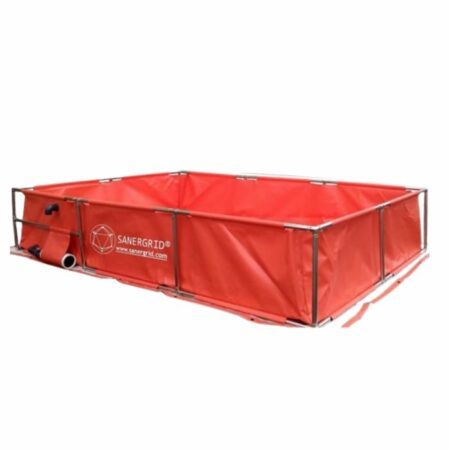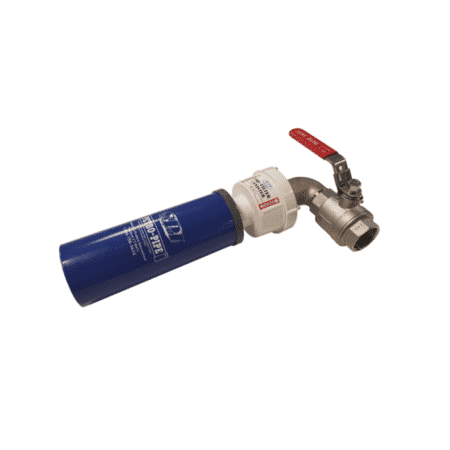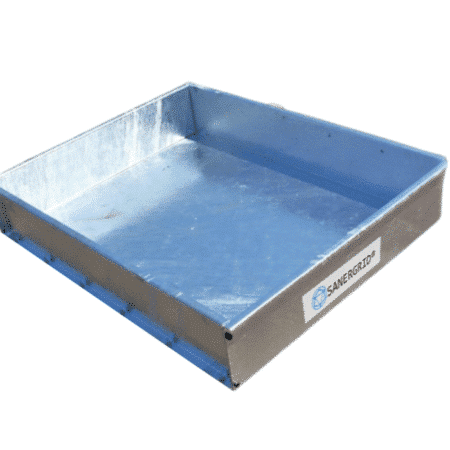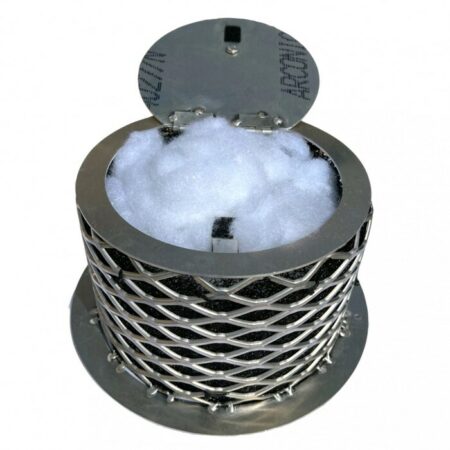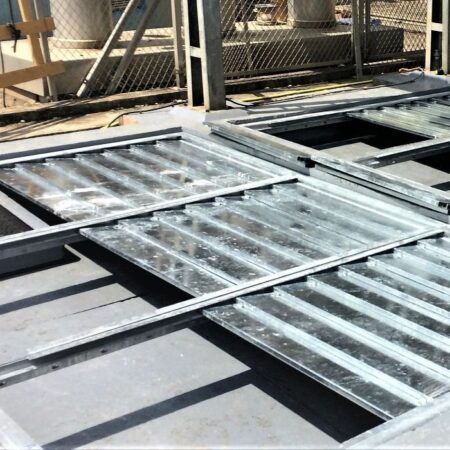TRFLEX® ECO TRUCK™ Flexible storage berm for rolling stock
0,00 €
Storage tank for rolling stock containing hydrocarbons
The standard TRFLEX® ECO TRUCK™ range of ultra-strong flexible spill containment bins has been designed for short- to medium-term storage of your rolling stock containing hydrocarbons (tanks, fuel oil, tanker trucks, mobile substations with oil transformers, …) up to 200,000 L under conditions of use with high mechanical stress. With its galvanized angle-bracket structure, our unique process of double ultrasonic welding, ultra-reinforced 1670 DTEX two-way internal weave and double PVC induction with UV protection at over 1450 g/m² have made TRFLEX ECO TRUCK one of the leading references on the European market.
Description
Description
How can you create a simple, robust and temporary retention volume for your rolling stock containing hydrocarbons on your worksites in order to comply with environmental standards on hydrocarbon discharge for your heavy machinery, at lower cost, quickly, robustly and safely? That’s the problem SANERGRID solves with the TRFLEX-ECO-TRUCK™ range, thanks to the sizing of the flexible retention pans, and their very high technical characteristics, capable of withstanding trucks, cranes, shifting beams and other mechanical stresses associated with handling power transformers.
The TRFLEX ECO TRUCK™ range consists of 3 distinctive elements:
Long experience of TRFLEX technology
SANERGRID’s TRFLEX ECO TRUCK™ flexible tarpaulin for the storage of wheeled vehicles containing hydrocarbons is the direct result of long experience in dealing with oil spills and managing hydrocarbon pollution on the high seas. SANERGRID has reengineered this ultra-resistant tarpaulin mechanically, chemically and treated against ultraviolet rays to adapt perfectly to the constraints associated with storing vehicles containing hydrocarbons.
- Reinforced PVC tarpaulin with double internal weft in high-tenacity 1670 DTEX polyester for enhanced mechanical resistance to tearing, puncturing, cutting and tearing.
- Tarpaulin covered with a double-sided vinyl (PVC) resistant to hydrocarbons and ultraviolet rays, with a total grammage greater than 1450g/m² for enhanced resistance to abrasion, sunlight and hydrocarbons.
- Unlike traditional tarpaulins on the market, the double-sided induction process provides double retention security: in the event of a non-through cut on one side, the opposite wall continues to act as retention.
- All our welds are made using a unique double-sided ultrasonic welding process, which makes the welds extremely robust and guarantees that the TRFLEX® flexible containers are completely watertight.
100 mm to 500 mm high bracketed tarpaulin support structure
- All around the pan, TRFLEX ECO TRUCK™ tarpaulin sleeves are welded in our factories to accommodate feet for holding the vertical walls in place. For the TRFLEX ECO TRUCK range, this angled metal structure is made of hot-dip galvanized steel by default. Aluminum or stainless steel available on request.
- All our TRFLEX retaining structures have been sized and tested by our factory to maintain their retention integrity up to 120% of their communicated nominal volume.
Protection against abrasion, puncture and cuts
- Anti-drill treads for heavy-duty handling
- For simple on-site repair, all our TRFLEX® ECO, ECO+, MAINTENANCE, ECOTRUCK™ and REFOR bins come with a tarpaulin repair kit with patch and glue in the event of punctures or tears smaller than 10 cm.
Please note: all our low rainwater drainage points are between 30 and 50 mm from the ground by default. It is normal to have a residual water level in the tanks. We recommend raising your water-sensitive equipment several centimetres above ground level, using planks, wooden wedges or concrete beams. For specific low point requirements, please contact us.
Accessories and options
The TRFLEX range also includes a number of accessories to suit your needs:
- Anti-hydrocarbon cartridges Kit PETRO PIT PVC and KIT PIPE PVC, when used outdoors to allow continuous drainage of rainwater.
- Additional protective geotextile layers GEOGRID™
- Steel load distribution plates
- Transport and storage bag
- Stackable hard cases for secure storage and transport of your TRFLEX products
- ECOROLL™ anti-puncture treads for heavy machinery
- Prefabricated concrete beams to raise your machine by a few centimetres if the equipment cannot withstand exposure to water
- Ballast bags for ballasting bins in windy areas or if there is a significant delay between the deployment of the bin and the installation of the material to be stored in the bin.
- CAMFLEX™ communication hoses to link several TRFLEX® together
We have a range of references to suit your flexible retention and temporary storage requirements:
- For temporary containment with lower mechanical stress, short durations and frequent reuse with a lighter tarpaulin: TRFLEX-ECO™ range.
- For temporary storage with higher mechanical stresses, short to medium durations and frequent reuse with a heavier tarpaulin: TRFLEX-ECO+ range.
- For medium to very long term storage applications with a double reinforced tubular structure: TRFLEX-REFOR™ range
- For the storage of machinery containing hydrocarbons with an anti-slip maintenance surface: TRFLEX-MAINTENANCE™ range.
For permanent or semi-permanent storage, we recommend the TRT and TRT MODULO ranges, as well as concrete pits fitted with our SKID PIPE, STORM BARRIER and PETRO BARRIER PUMP drainage systems.
Technical data
Additional information
| Conditions of use | indoor, outside |
|---|---|
| Material | PVC |
| Type of bin | Flexible |
Use and maintenance
Before installing the berm:
- Make sure the floor surface is smooth, flat, clean and large enough to accommodate the flexible drip tray and transformer, to avoid pinching and pressure points.
- We recommend adding at least one layer of geotextile before unfolding the tarpaulin (supplied as standard).
- If bins are stored outdoors, they must be emptied regularly, and not handled with water inside.
Berm installation:
- Unfold the flexible tray at the desired storage location on the geotextile layer supplied with the tray.
- Place your equipment on the geotextile previously installed at the support points, or on the runways/load distribution plates to avoid punching.
- Unfold the tray walls and insert the brackets into the welded sleeves around the edges.
- Secure or weight the bin to the ground to prevent tearing and lifting during windy episodes if you do not place the equipment in the bin within moments of setting up the bin.
Maintenance:
A regular visual inspection of the equipment is required for the following points:
- Tightness at wall penetrations, accessories and/or plugs correctly screwed in.
- Integrity of bin walls, absence of deformation or damage (knocks, impacts, cuts, tears, cracks, etc.).
- Check that rainwater flows properly through the filters: in the event of clogging, clean the pre-filters, or change the filters if they are saturated or have exceeded their recommended service life.
- It is essential to carry out a visual inspection after each period of strong wind.
- The frequency of these checks depends on the constraints of each site, depending on its degree of corrosion, soiling, presence of organic matter, etc.
Please refer to the user manual for further details.
Failure to follow good operating practices and to deal with field anomalies and defects is the responsibility of the equipment owner.
Additional information
Storage facilities for high-voltage substations in contact with pollutants must comply with current standards and legislation.
The road transport structures used are in line with the recommendations for the transport of dangerous goods, as set out in the ADR.
With regard to retention and the risk of soil pollution, our tanks comply with European standards:
- NF C13-100 and NF C13-200, which prevent the risk of overcurrents and grounding problems. They protect people from direct or indirect contact with conductors, and electrical installations from fire, short-circuits and lightning.
- NF EN 61936-1, relating to the design and installation of electrical installations, which requires a watertight retention tank representing 100% of the volume of oil used.
Rainwater drainage and hydrocarbon pollution :
Thanks to the SPI anti-hydrocarbon water filter system, the tank is empty of water most of the time, ready to receive hydrocarbons. In compliance with French water law (decree 77-254), the water discharged from the tanks is not contaminated with more than 5 ppm of hydrocarbons, in accordance with standard EN 858-1 (“light liquid separation plants”).
SPI® filters are regularly tested in independent laboratories: please refer to the SPI® ranges.
